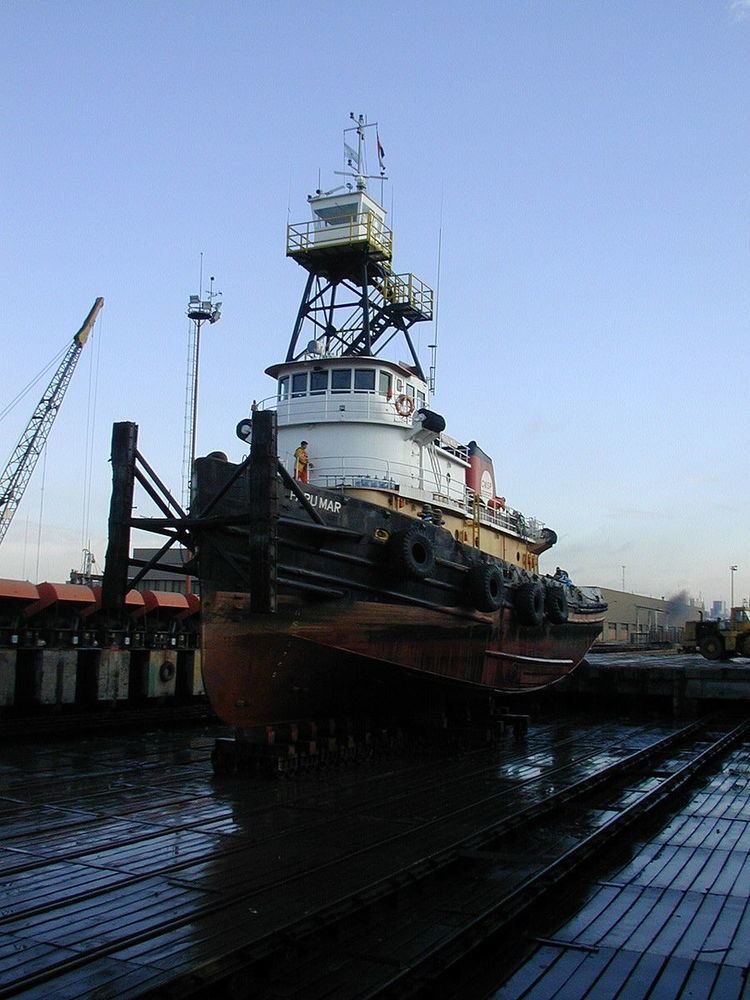 | ||
A syncrolift or synchrolift is a system for lifting boats and ships out of the water for maintenance work or repair. The vessel is maneuvered over a submerged cradle, which is then lifted by a set of synchronized hoists or winches. The vessel can be worked upon in place, or it can be moved inland so the syncrolift can be freed for other use.
The largest syncrolifts can lift vessels up to 100,000 tons. Because of this capacity, syncrolifts have almost completely supplanted the older dry dock systems, most of which could handle only one vessel at a time.
The Syncrolift System was invented in the mid 1950s by Raymond Pearlson when he was working as Chief Engineer for Merrill Stevens, a small Miami shipyard. In 1958 he formed Pearlson Engineering Company (PECO) to develop his invention. PECO was taken over in 1959 by the British engineering group Northern Engineering Industries (NEI) and for the next 20 years or so Pearlson travelled the world installing his product in hundreds of shipyards. PECO became NEI Syncrolift, Inc. in 1986 and in 1989 became part of Rolls-Royce plc when that company acquired NEI.
In 2002 Pearlson was awarded the Elmer A. Sperry Award for the "invention, development and worldwide implementation of a new system for lifting ships out of the water for repair and for launching new ship construction".
